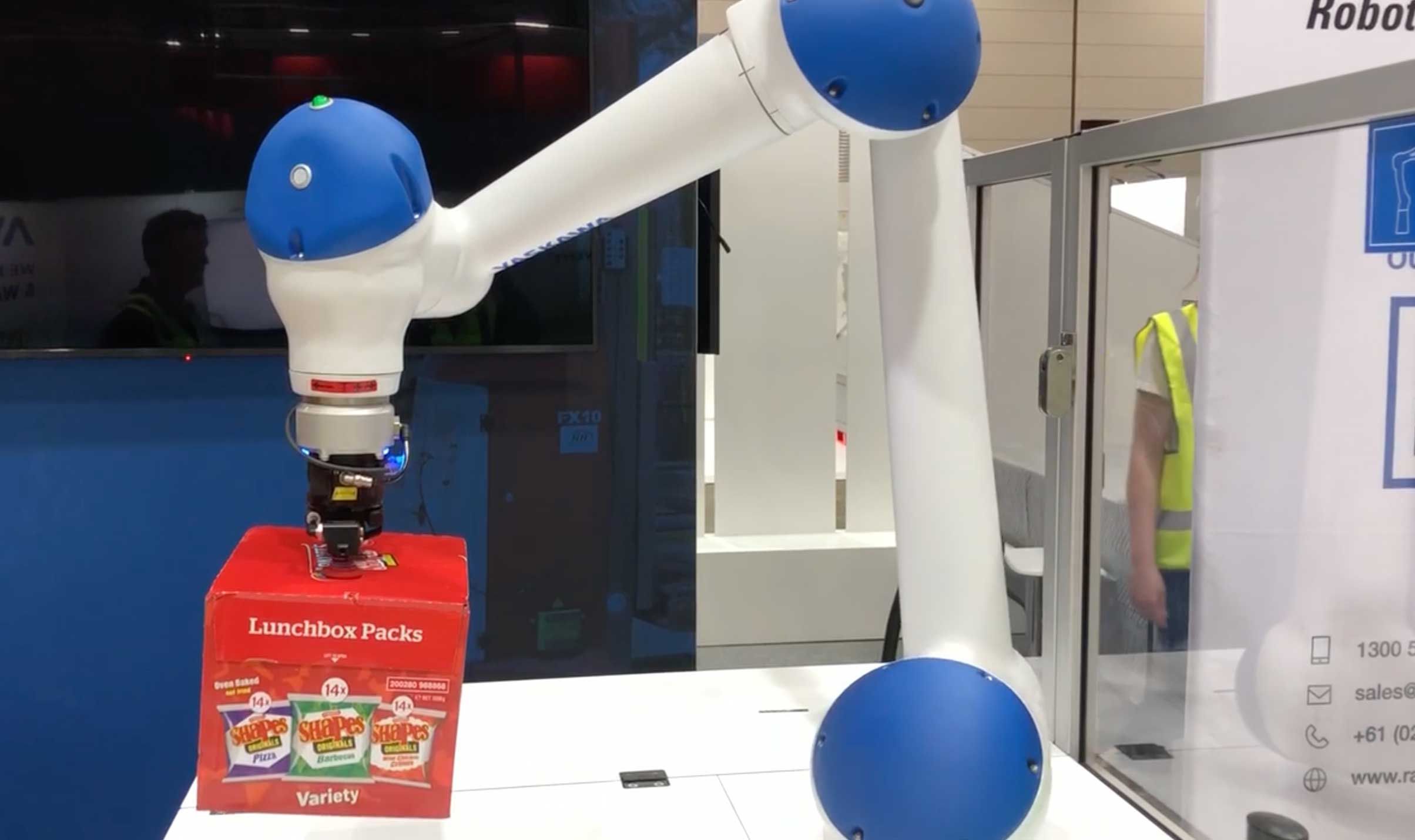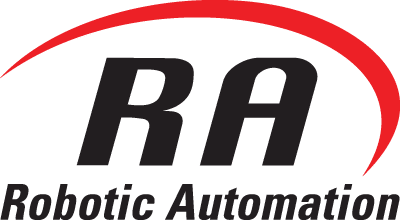Are you thinking about a Cobot?
January 12, 2023
Something that we get asked a lot at Robotic Automation is, “Should I be introducing a cobot, or a robot?”
Our answer is always the same. It depends.
Conventional, or industrial ‘autonomous’ robots provide dependable, consistent repeatability at speed, offering significant productive efficiency for fixed and highly repetitive processes.
They are well suited to a ‘high-volume, low mix’ production environment.
However, conventional industrial robots are typically fixed and heavy, they require a greater level of safety surrounds and take up a large floorspace. ROI is recovered over the medium-long term, with high up-front and ongoing costs to maintain, requiring specialist programming capability.
Enter the collaborative robot (or cobot).
A collaborative robot (or cobot) is designed to work side by side with people and can support applications from welding, pick and place, injection moulding, CNC, packaging, palletising, assembly, machine tending and materials handling. You can partially delegate many human based skill activities, with cobots able to undertake a range of tasks of substantial repetition, whilst offering high flexibility.
A collaborative robot arm is compact, occupying reduced floorspace and can offer a great flexibility for ‘low-volume, high-mix’ production, or high specialisation environment.
It is easier to re-program and retool a cobot to undertake a range of actions, providing greater agility as well as reductions in cost of operation.
As cobots are also designed to work safely side-by-side with human operators, reduced safety measures are required when compared with a conventional robot.
There has been rising growth in the use of collaborative robots (or cobots), for their ability to integrate seamlessly with the human workforce. Developments in AI, machine learning and sensor technology will only promote further use in the manufacturing line.
The very benefits of a cobot, however, can also be its limitations.
Safety in design is paramount to ensure that cobots can work harmoniously alongside humans.
For this reason, a cobot has limited carrying capacity (or payload) of a conventional industrial robot.
The compact nature of the cobot arm and required end-of-arm tooling also places limitations on physical reach.
In addition, cobots operate at a slower speed, which can be a considerable disadvantage.
Traditional industrial robots that are typically guarded and fenced off do not have limitations on speed, payload or end-of-arm tooling.
So, returning to the beginning of our article, the answer as to whether a cobot, or a robot?
Cobots and conventional robots both offer the benefits of increased productivity, increased quality consistency and reduced wastage.
But, as to which might be best for your particular situation?
It depends on your key drivers and trade-offs.
Cost/ROI, safety, speed, flexibility…?
Which robotic arm is best for you?
Connect to a specialist at Robotic Automation to find out which cobot or robot would work best for your operation.
Robotic Automation are the exclusive distributor (Australia and New Zealand) of a range of Yaskawa-Motoman industrial robots and new generation human collaborative robots (HC10) that are robust, flexible, affordable, and easy to use across a range of applications.
As one of the largest robotic manufacturers in the world, Yaskawa-Motoman continue to push the envelope in cobot R&D, with a focus on increasing carrying capacity (payload) and working range, whilst maintaining highest safety features and state-of-the-art control systems.
Find out more about Yaskawa-Motoman HC10 range.
Locate a Robot or Cobot using our Robot Selector .
Link to Contact Us.

